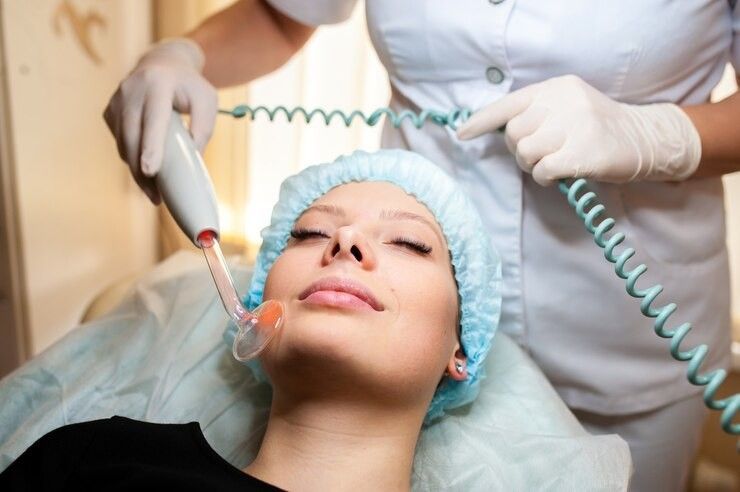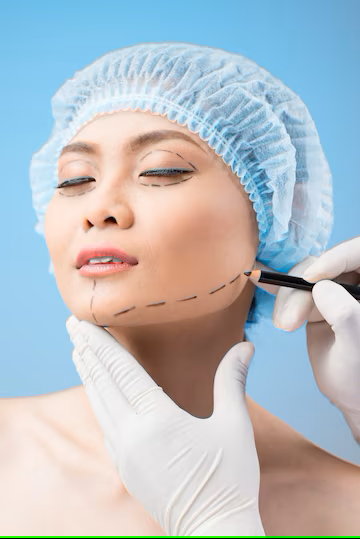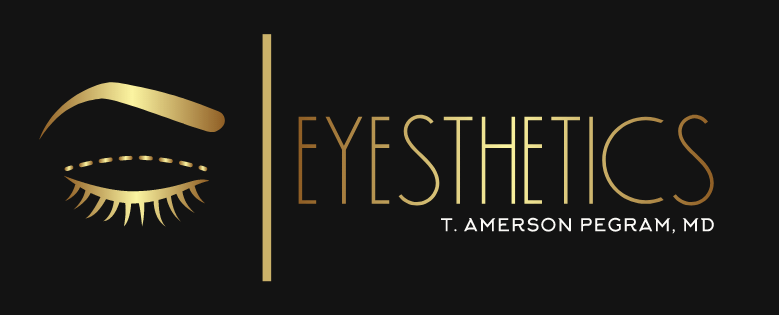Understanding and Treating Tear Duct Blockages with DCR Surgery
Author name
Chronic tearing can be a frustrating and uncomfortable condition, significantly impacting daily life. If you're struggling with persistent tearing, you might be dealing with a tear duct blockage. At Eyesthetics, under Dr. T. Amerson Pegram, a leading oculoplastic surgeon in Clarksville, TN, you can find relief through specialized tear duct surgery. This blog will explore the symptoms and causes of tear duct blockages and explain how the dacryocystorhinostomy procedure can help.
Understanding Tear Duct Blockages
Symptoms of Tear Duct Blockages
Tear duct blockages can manifest in various ways, causing discomfort and inconvenience. Common symptoms include:
- Excessive Tearing: Continuous tearing, even when not crying, is the most apparent symptom.
- Recurrent Infections: Frequent eye infections or conjunctivitis can indicate a blocked tear duct.
- Swelling and Redness: Inflammation around the inside corner of the eye and near the nose can occur.
- Pain and Discomfort: Persistent discomfort or pain in the affected area may be present.
- Mucus Discharge: A sticky or mucous-like discharge from the eye is another common symptom.
Causes of Tear Duct Blockages
Several factors can lead to tear duct blockages, including:
- Congenital Issues: Some individuals are born with underdeveloped or blocked tear ducts.
- Age-Related Changes: As we age, the tiny openings in the tear ducts can narrow or become blocked.
- Infections: Chronic sinus or eye infections can cause inflammation and scarring, leading to blockages.
- Injury or Trauma: Facial injuries or trauma can damage the tear ducts.
- Nasal Polyps or Tumors: Growths within the nasal passages can obstruct the tear ducts.
The Dacryocystorhinostomy Procedure
When conservative treatments fail to alleviate chronic tearing, dacryocystorhinostomy (DCR) surgery may be recommended. This procedure is designed to create a new pathway for tears to drain, bypassing the blocked tear duct.
What to Expect During Dacryocystorhinostomy
Consultation and Preparation
Your journey begins with a thorough consultation with Dr. Pegram, an expert in oculoplastic surgery in Clarksville, TN. During this consultation, he will:
- Review Medical History: Discuss your symptoms, medical history, and any previous treatments.
- Conduct an Examination: Perform a detailed examination of your eyes and tear ducts.
- Order Diagnostic Tests: Request imaging studies, such as a dacryocystogram, to pinpoint the blockage location.
The Surgical Procedure
DCR surgery can be performed using two primary approaches: external and endoscopic.
- External DCR:
- Incision: A small incision is made on the side of the nose, near the inner corner of the eye.
- Creating a New Pathway: Dr. Pegram will create a new drainage pathway from the tear sac to the nasal cavity.
- Inserting a Stent: A small tube or stent may be inserted to keep the new pathway open during healing.
- Closing the Incision: The incision is closed with sutures, and a bandage is applied.
- Endoscopic DCR:
- No External Incision: This approach uses a thin, flexible tube with a camera (endoscope) inserted through the nostril.
- Creating a New Pathway: The new drainage pathway is created internally, avoiding an external incision.
- Inserting a Stent: As with the external method, a stent may be placed to maintain the new pathway.
- Minimally Invasive: This method reduces visible scarring and recovery time.
Recovery and Aftercare
Post-surgery, you can expect:
- Minimal Discomfort: Any pain or discomfort is typically manageable with over-the-counter pain relief.
- Follow-Up Appointments: Regular check-ups with Dr. Pegram to monitor healing and stent placement.
- Temporary Restrictions: Avoiding activities that could increase nasal pressure, like heavy lifting or blowing your nose.
- Improved Symptoms: Most patients experience significant relief from chronic tearing within a few weeks.
Benefits of Dacryocystorhinostomy
Effective Symptom Relief: DCR surgery effectively alleviates chronic tearing and associated discomfort. Minimally Invasive Options: Endoscopic DCR offers a less invasive alternative with quicker recovery. Long-Lasting Results: The creation of a new drainage pathway provides a permanent solution for most patients.
Navigating tear duct surgery can feel overwhelming, but with the expert care of Dr. Pegram at Eyesthetics, you're in capable hands. As a leading specialist in ophthalmic plastic surgery in Clarksville, TN, Dr. Pegram is dedicated to providing personalized care and achieving exceptional results. Schedule your consultation today and take the first step towards relief from chronic tearing.




Is a Face and Neck Lift Right for You? Key Signs You Might Benefit from the Procedure at Eyesthetics






